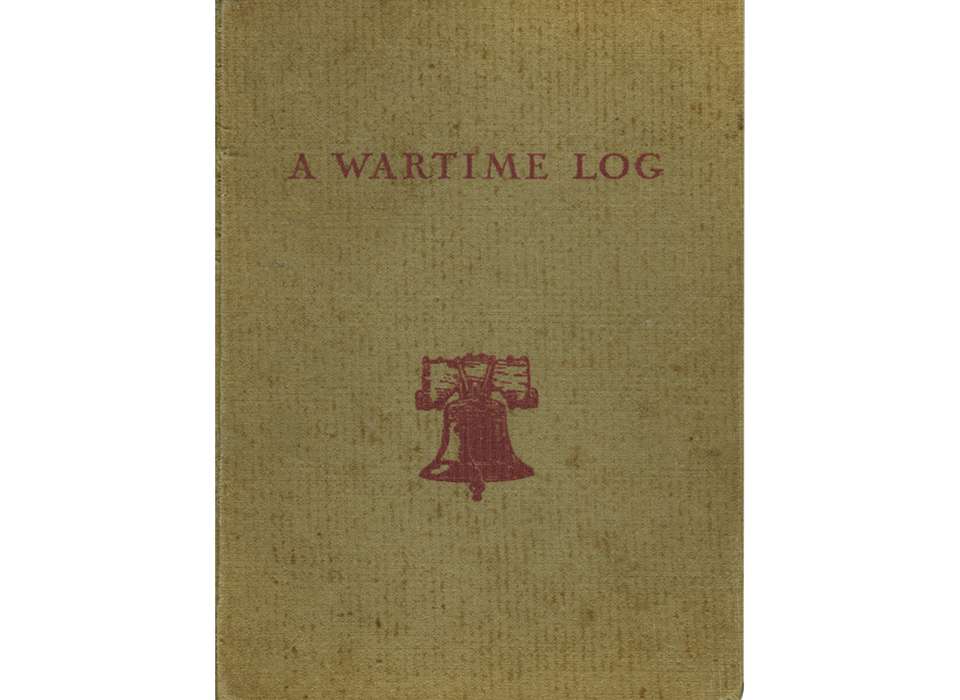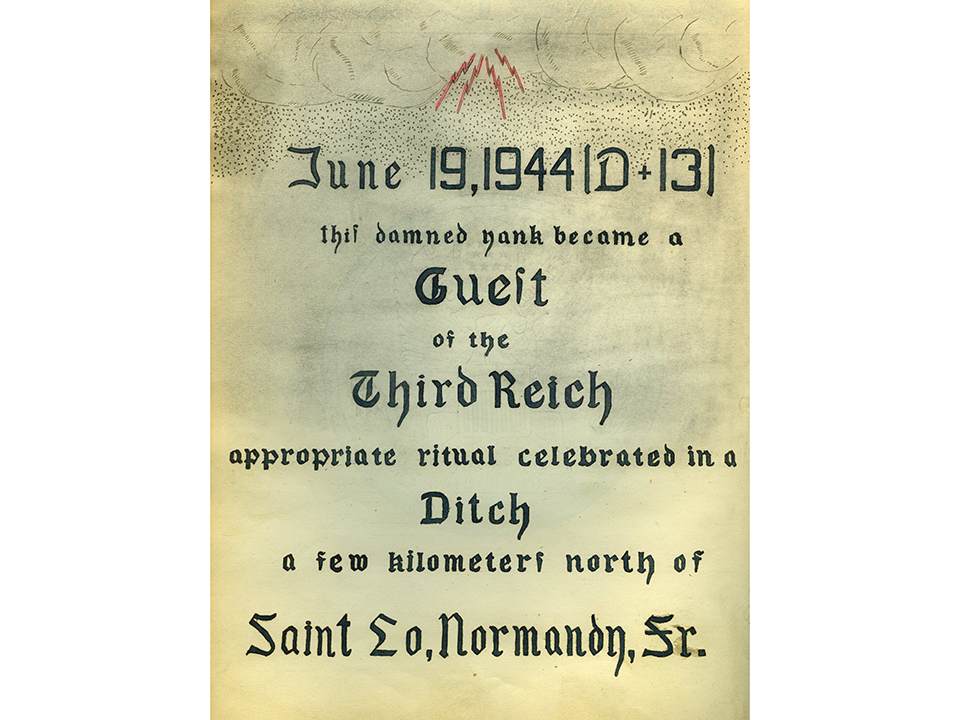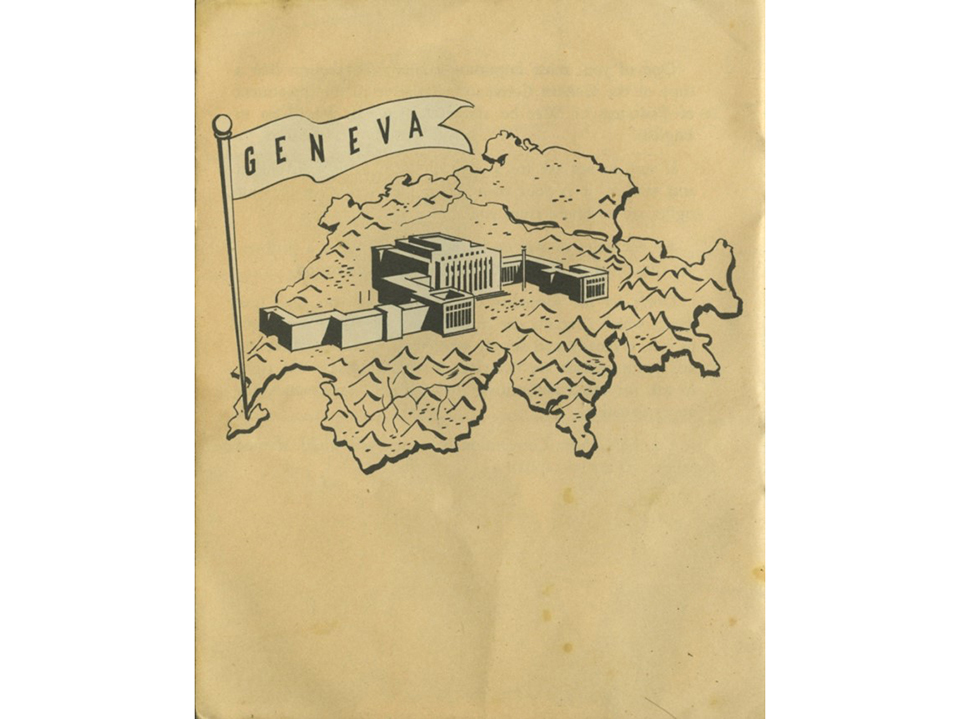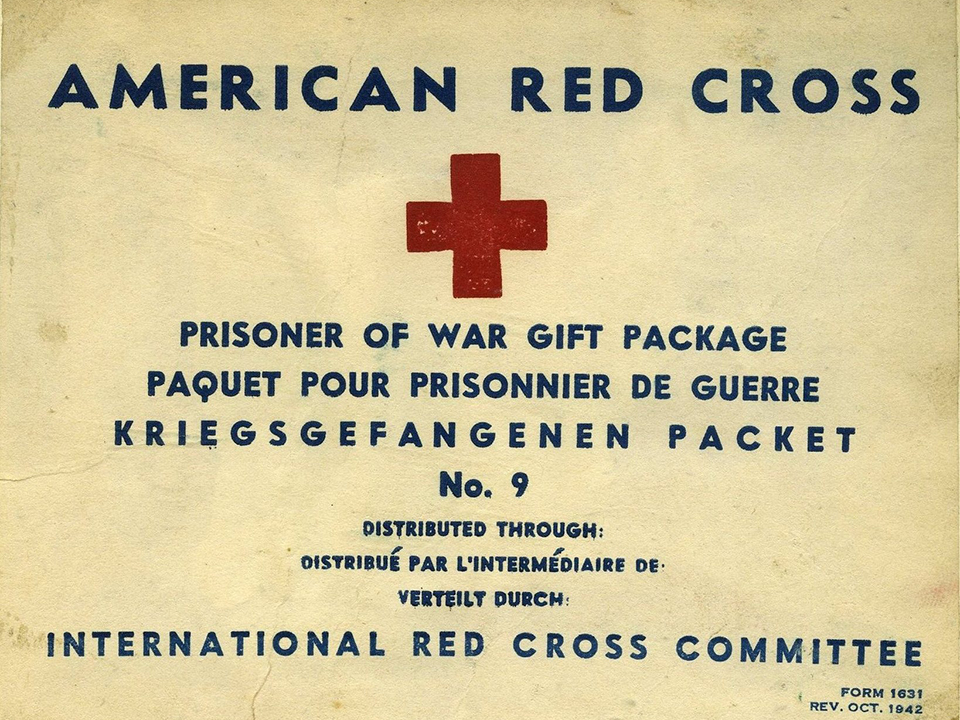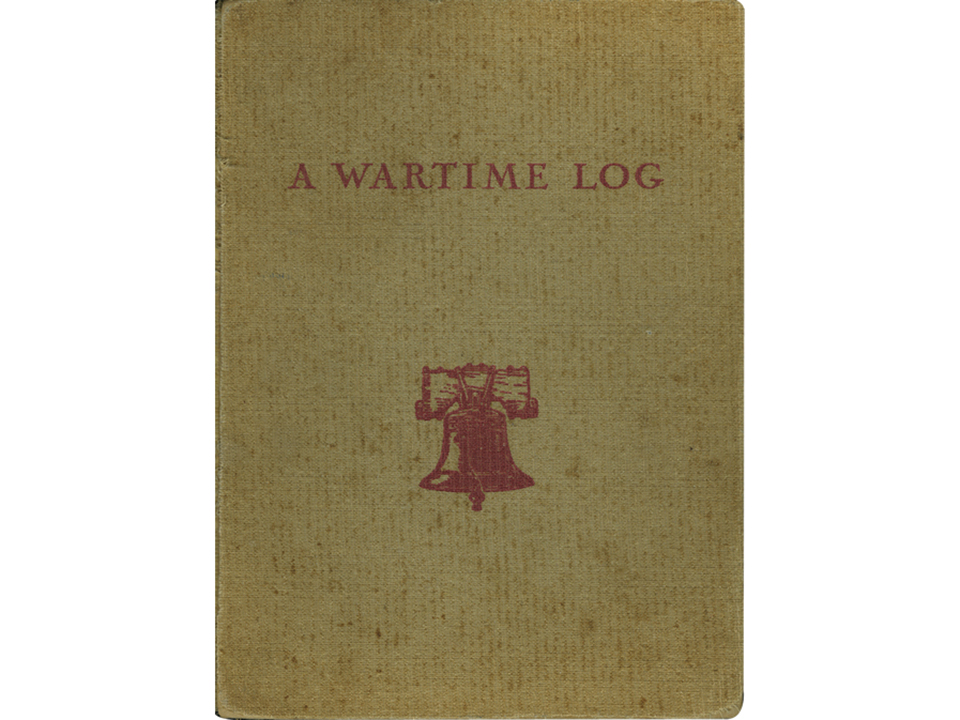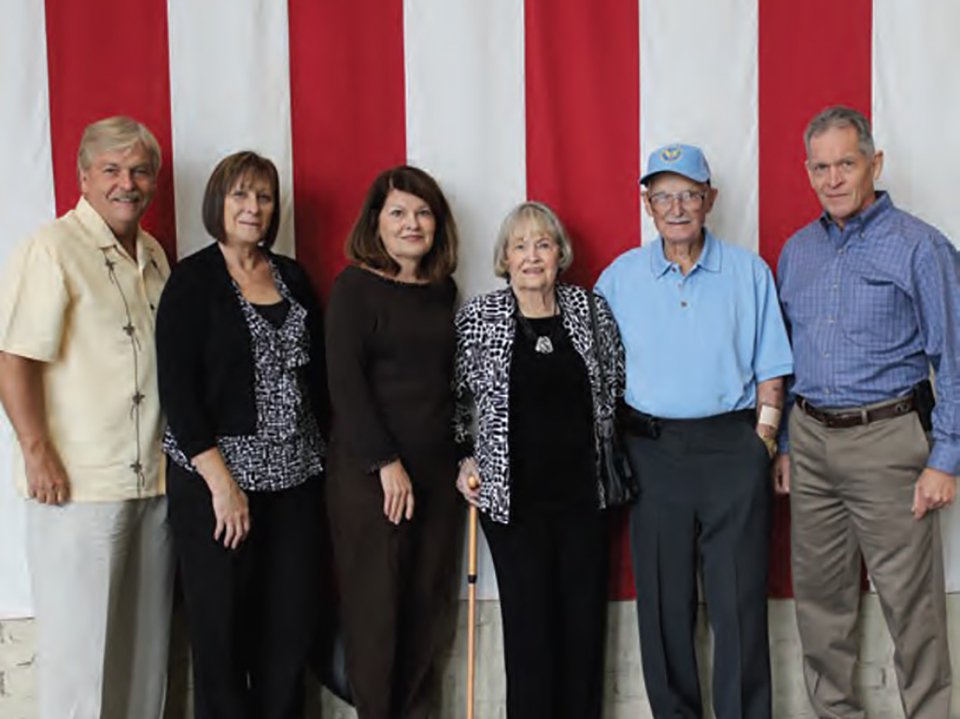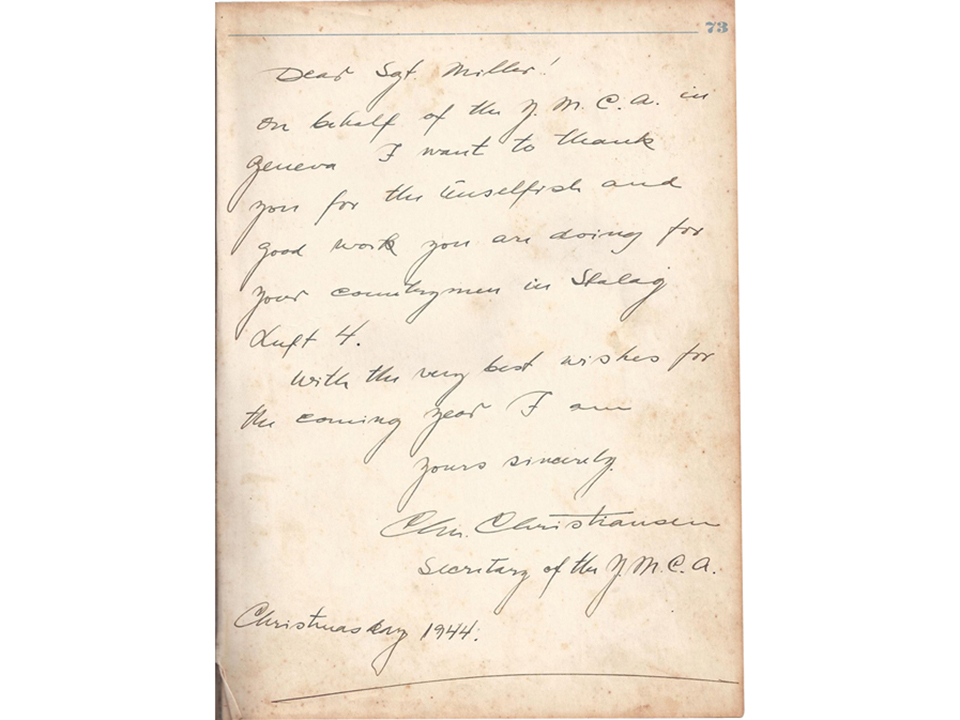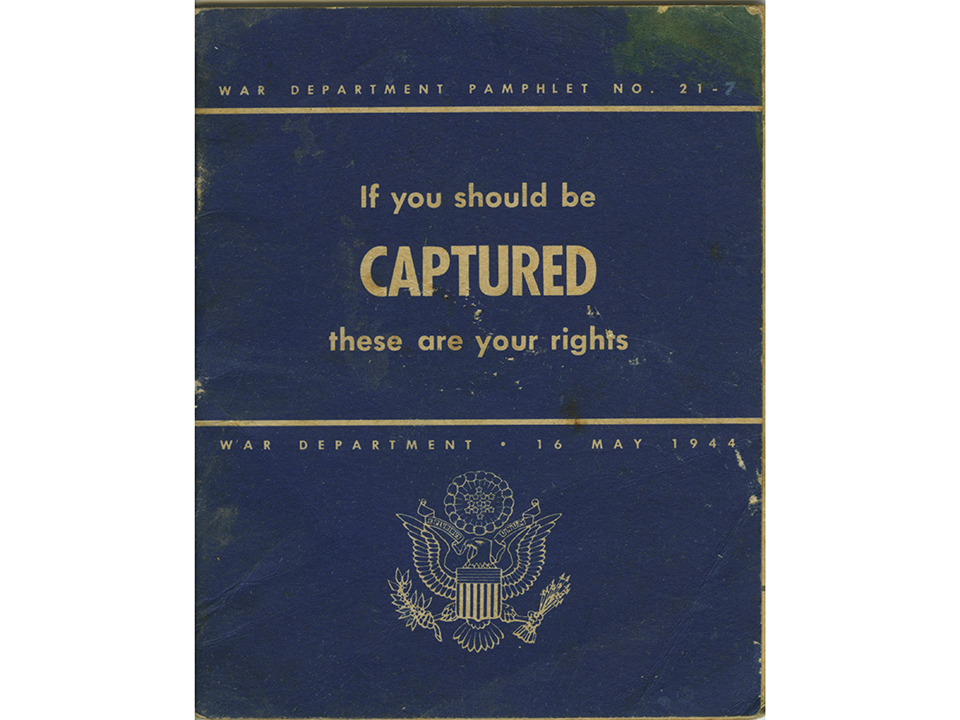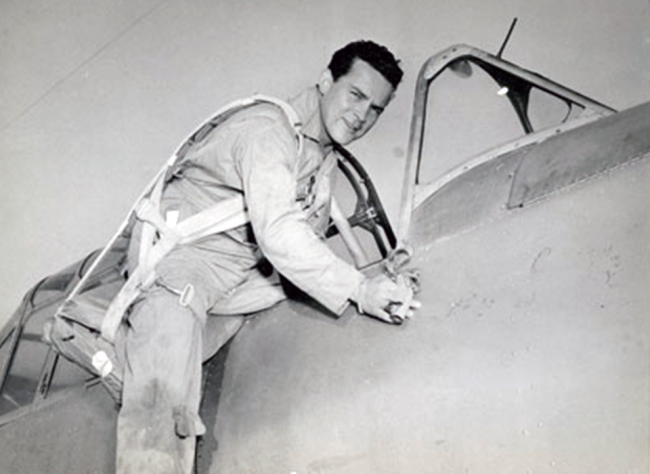“June 19, 1944 (D+13) this damned yank became a Guest of the Third Reich appropriate ritual celebrated in a ditch a few kilometers north of Saint Lo, Normandy, Fr.” Ever since I read that sentence, the start of Major Newton Cole’s journal, I was hooked. For more than a decade, I have cultivated and curated the Museum’s prisoner of war collection. Each piece contains glimpses of POW life that inform our understanding of the American prisoner of war experience. There is great variation in the experience in itself, most significantly in survivability by detaining power.
The major contributing factor to POW survival in the European theater was the involvement of the American Red Cross and the International Committee of the Red Cross, the “Geneva Men,” who inspected and enforced (to varying degrees) the Geneva Convention. The regulations outlined in the Geneva Convention Relative to the Treatment of Prisoners of War, established in Geneva on July 27, 1929, were life saving measures for the overwhelming majority of American POWs in Europe. The Geneva Convention was largely responsible for the low death rate of American POWs in Europe, roughly one percent in German hands (1,121 out of 93,941.) In the Pacific, the detaining power did not recognize the Geneva Convention or value POW life. The death rate of American POWs in the hands of their Japanese captors was roughly 40 percent (11,107 out of 27,465.)
The massive effort of the Red Cross to provide additional aid to POWs and their work with volunteers and families on the home front accounted for 27 million parcels sent to POW camps. Many of these parcels contained food, non perishables like Spam, canned salmon, prunes (used to make alcohol), and KLIM (canned milk): vital supplements to meager German rations. Sometimes the parcels contained a different kind of nourishment, supplies contributed by the YMCA. The YMCA who worked through the Red Cross and the “Geneva Men” to bolster the mental wellbeing of prisoners of war was responsible for the religious, educational, and recreational needs within POW camps.
One particular piece, supplied in large quantities by the YMCA to POWs in Europe, was a blank diary bearing the title, “A Wartime Log.” There is no exact figure on how many of these journals were printed although the figure is thought to be somewhere around 21,000 volumes. Versions were printed by the Americans, the Canadians, and the British. The intent of the diaries was to “create a visible link” between those at home and those in the camps, to give those in captivity assurance that someone back home was thinking of them. These diaries served as sketchbooks, journals, autograph books, cookbooks, song books, scrapbooks, and photo albums. They were coveted, bartered, and traded; they created a precious forum in which to list frustrations and to sketch out hopes and desires. The result is an amazing collective body of work the extent of which is still unknown. Some of these journals have been deposited in collections around the world, but many are still in the hands of the veterans and their families, as they are intensely personal objects.
The National WWII Museum has 19 separate volumes, individual versions of “A Wartime Log,” kept by 18 Americans and one British officer in seven different camps. As a genre, these form my selection for a collection highlight over the Museum’s 20 years of collecting. The first was acquired in 2001 and was donated by the veteran, Royal Air Force POW Olaf Lambert, who settled in New Orleans after the war. Seven copies of “A Wartime Log” were displayed in the 2012 exhibition “Guests of the Third Reich” and were digitized and placed online as an extension of that exhibition. As is common, while the exhibition was up, additional POW material was offered and acquired by the Museum. It was important to me personally as the show’s Curator, but also to the institution to recognize the former POW veterans who were coming through the exhibition.
We also hosted an event, which remains high on my list of programs among a host of amazing days and evenings. The program, From their Fathers: Children of POWs Share Stories and Artifacts, gave the donors of some of these unique, personal manuscripts the opportunity to speak about their POW dads (and grandfather) and to talk about the lasting legacy of the WWII experience in general and the prisoner of war experience specifically within their families. We had a room full of individuals who shared many similar experiences, but had never connected with others and talked about them. It was an emotional program; many tears were shed, onstage and in the audience, and there was an audible collective gasp when one guest talked about how her WWII POW father had been looking forward to this program but had died just weeks earlier. A friend whose father-in-law was a WWII POW remarked that the only improvement there could have been on the program would’ve been to hand out tissues.
One artifact donor daughter who could not be present that day subsequently visited for another joint program. Helen Maglione joined me in July 2013 for a Lagniappe Lecture to discuss POW diaries and her father’s copy of “A Wartime Log” that she donated in 2012. Her dad Joseph Veronick was a B-24 radio operator shot down in November 1943. While in Stalag XVIIB in Krems, Austria, he received pictures of his young daughter Helen Anne, which he pasted into his log. Later, when he returned home, Helen would look through her dad’s diary which contained sketches of his life as a POW. She even childishly traced a few things in her dad’s journal, a story Helen bashfully recounted 70 years later in front of our audience at The National WWII Museum. Another daughter, Dixie Kline, used her dad Dick Terrell’s copy of “A Wartime Log” to practice writing her name. Dixie and her sister Nitalynn donated their dad’s journal to the Museum in 2019. Dixie's name is scrawled in crayon on some of the pages. The lives that these volumes had after liberation is amazing and another interesting aspect of their role, as the diaries often contained a POW's hopes and dreams for the future.
One diary received after the run of the “Guests of the Third Reich” exhibit was from a Stalag Luft III “Kriegie” (short for Kriesgefangener], German for POW) Chester Strunk. I had the honor of sitting down with Mr. Chet, and his family and friends, to talk with him and have a guided tour through each page of his diary. Even though several of the diaries that had come into the Museum’s collection in the initial days of the Museum had been contributed by veterans, that was prior to my tenure. Chet Strunk was the first POW diarist who I could query in person! It was a tremendous opportunity and I will never forget his generosity with his time and his memories, not to mention the gift of his wonderful journal.
Another diary that stands out is that of Willard “Boo” Miller, not only for his name, but because of the role he played in his camp, Stalag Luft IV. Miller was the Man of Confidence (direct translation from the German Vertrauensmann) in Compound D, which meant that he served as the POW’s representative, the mediator between the POW population and the camp administration. POW representation, either by senior officer or by election, for purposes of mediation with the detaining power, is one of the protections outlined for POWs in the Geneva Convention. Men of Confidence would hear all prisoner complaints and bring these before the camp Kommandant. These complaints would range from concern over the meager German rations, to a POW having to pay for a broken fork, to the stray bullets from a guard’s accidental machine gun burst.
Men of Confidence would also be interviewed by officials from the International Red Cross and the YMCA, on their visits to inspect camp conditions. Miller’s diary is special because it was presented and inscribed to him personally as a Christmas gift by a “Geneva Man” Chris Christiansen, YMCA representative who authored a book about his inspections of POW camps during World War II called Seven Years Among Prisoners of War. Miller’s collection includes not only his diary, but two copies of the Geneva Convention which he used for reference in his arbitration with Stalag Luft IV administrators and his notes on those meetings which detail POW grievances and needs.
Each diary in the Museum’s archives is special and each copy of “A Wartime Log” presents a different portrait of an individual fighting to sustain life, culture, and memories within a prison camp. The Museum continues to collect these resources and digitization of the collection is ongoing. They are incredible research tools and windows into the personal lives of the “Guests of the Third Reich.” With the help of the Red Cross and the YMCA, and under the protections of the Geneva Convention, 92,820 American troops survived the German POW camp system.
View the Ask a Curator: POW Diaries from the European Theater webinar hosted by Kim Guise.
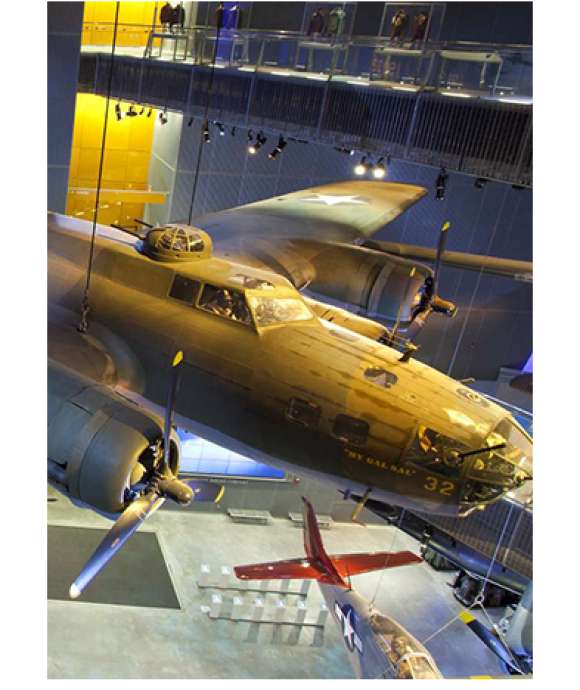
Building Collections, Remembering Lives: 20 Years of Collecting at The National WWII Museum
As The National WWII Museum celebrates year 20, we look back at some collection highlights.
Kim Guise
Kimberly Guise holds a BA in German and Judaic Studies from the University of Massachusetts Amherst. She also studied at the Universität Freiburg in Germany and holds a masters in Library and Information Science (MLIS) from Louisiana State University. Kim is fluent in German, reads Yiddish, and specializes in the American prisoner-of-war experience in World War II.
Cite this article:
MLA Citation:
APA Citation:
Chicago Style Citation:
